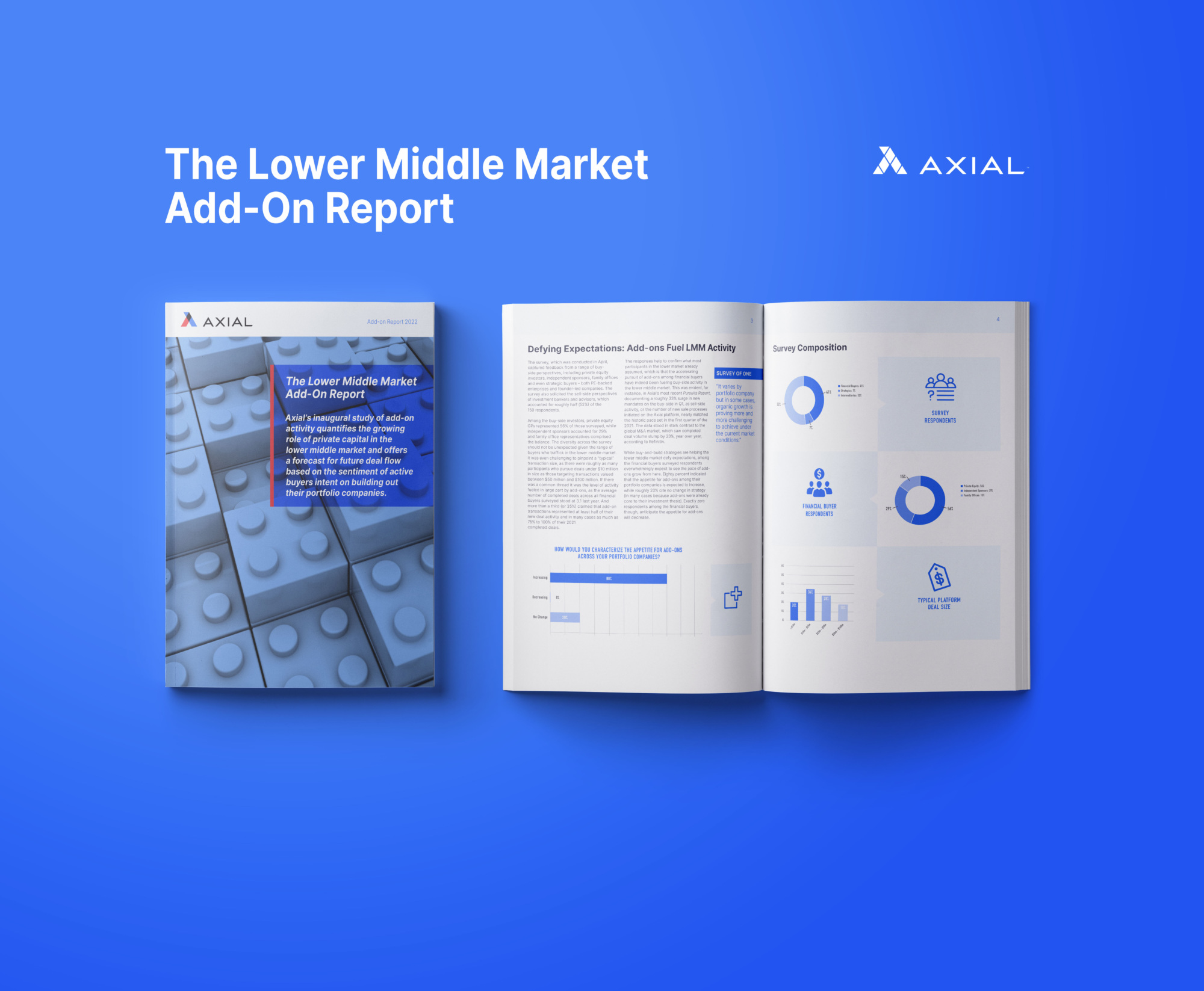
Introducing The Lower Middle Market Add-On Report
A survey of 150 deal professionals across the Axial network documents the extent to which financial sponsors have descended upon…
Tags
Private equity’s middle market is slowing down. January 2016 middle market deal numbers were the lowest since 1991, and there appears to be a valuation gap in capital markets. At the same time, global capital markets are flooded with cash, yet investor dollars are disproportionately concentrated in a select few areas.
The wonderful thing about capitalism is every problem presents a profit opportunity. There’s room in the private markets for a shift — for entrepreneurs to move private equity capital towards early stage development and relieve congested upper markets.
I have an unconventional proposition for investors: Act more like tree farmers.
Private equity and tree farming may not be common analogs, but today’s investors could afford some lessons from America’s agro specialists.
For those who aren’t familiar, here’s a simplified tour through some tree farming concepts:
What does this have to do with private equity?
Think of a new platform company (or portfolio of platform companies) as a tree (or tree crop). Like many trees, some potential platform companies won’t reach peak value for 10+ years. Unfortunately, today’s PE markets have very little to offer companies with those time horizons, which means they miss lots of opportunities.
But what if private equity companies, like tree investors, coordinated and created a more efficient ecosystem over a longer time horizon?
Currently, buyer-seller cooperation in private equity markets suffer peaks and troughs. Take the latest cycle: There were record valuations between 2013 and 2015, multiples swelled, and sellers had plenty of demand. More recently, however, buyers aren’t convinced future conditions could support sky-high premiums. It’s a major reason January middle market deals were the lowest in 25 years.
There is also a “global superabundance of capital” in PE, as Bain Capital described in its 2015 annual outlook. Today, listings are more difficult and deals are slowing down, so private equity investors are looking to strategic exits to lock in returns — competition is extremely congested there, too.
Bain points out PE penetration for companies valued below $100 million was below 5% heading into 2016. This is because such companies often “lack the scale or the growth to attract the interest of investors.” Too many firms and groups are chasing too few “ideal” investments.
To take our tree analogy further, this is like too many farmers buying almost-mature Red Oaks. They hope to sell them for lumber when the Oaks hit peak value. That competition drives up the cost of peak Oaks, increase the supply brought to market, and reduce the profitability of Oak-related products.
Follow the logic, and lots of Oak buyers might not be able to make a profit on their own products (like chairs or cabinets) after input costs go up and sales margins shrink. The same is happening for PE buyers, who see huge multiples in almost-mature companies along with fewer good exit options down the road.
A more savvy investor, operating in a more efficient market, would realize the best profit opportunity isn’t in peak Oaks, where the markets are very concentrated, but upstream in younger Oaks, which can be brought to market after the present glut is liquidated.
The general concept of platform farming isn’t entirely new in private equity.
There’s been some uptick in early-stage private equity specialists. If done properly, early-stage funds attract investor money away from later-stage private exits and public listings — where there isn’t enough present demand — and into earlier firm development.
PE firms focused on earlier-stage companies (I call them “Upstream”) know they must operate differently than traditional firms in the upper-middle market (“Downstream”).
Today’s Upstream markets aren’t robust enough. The glut at the top of the middle market is evidence of that. Too few private equity groups possess the operational flexibility, expertise, or tactical leverage in their portfolio to transform into an earlier-stage platform cultivation specialist.
Notably, Upstream PE firms today:
(A few years ago, Forbes ran an article arguing PE wasn’t suitable for this kind of venture-style innovation. I think they’re wrong, but early-stage PE managers will have to learn from angel investors and strategic partners. Younger firms, for example, aren’t levered up as easily.)
We are already seeing more and more funds launched that target smaller, younger companies, with some targeting start-ups. Over time, these Upstream PE groups will increasingly specialize in portfolio companies with similar profiles.
Some groups, for example, will target up-and-coming durable goods producers. Others will narrow even further and specialize in specific value-adds, such as salesforce development or export management. This process won’t be established overnight, and it will require more rigorous communication between Upstream and Downstream investors.
In our new framework, these Upstream partnerships would target exits at Downstream buyers. A platform would grow under an Upstream firm, generate stronger earnings, and (hopefully) look attractive to a Downstream private equity fund. Downstream buyers would feel intense pressure to coordinate and develop workable relationships with the best Upstream sellers.
Valuation and diligence would improve, saving everyone time and money. Platform companies would benefit too. A platform with 2 – 3 years’ exposure to an Upstream firm should come out the other side familiar with PE activity and having accrued significantly more value-add over the same period. The best Upstream farmers will be able to charge better and better premiums on their Downstream exits.
In other cases, Upstream firms may even take one of their platforms public, should the market bear it.
Ostensibly, there could even be firms specializing in reclamation projects and platform recycling, sifting through a trough of disappointing holdings dropped by larger private equity firms. This could improve liquidation efficiency in Downstream funds, especially, where such dispositions can wreck a previously balanced portfolio.
Investor demographics in an efficient PE ecosystem would be interesting. Upstream and reclamation-focused firms will likely be appealing to bargain-hunters, contrarians, opportunists, and entrepreneurial risk takers.
More traditional firms will likely absorb traditional platforms and add-ons; they’ll also retain the flow of conservative capital and investors. But every market sees new alternatives when yields compress — those with the appetite are naturally looking to assume more risk (or at least different risk) to chase peak performance.
There’s plenty of room in the markets for all of them. According to Private Equity Growth Capital Council, there are more than 2,800 PE firms headquartered in the United States. Those 2,800 companies back somewhere between 15,000 and 20,000 companies.
Per the U.S. Census Bureau and data collected by McKinsey and Company for the Private Equity Council, companies purchased by major private equity firms increased their sales “at a rate nearly 60 percent greater than the average for all U.S. companies.”
Even if there’s a natural bias in the data — PE companies likely focus on companies with the greatest pre-existing growth potential — this is striking evidence. Imagine those benefits dispersing through more and more early-stage, smaller companies. In a connected and deeper ecosystem, private equity won’t just extract value from existing assets; they’ll cultivate younger firms and make money by selling them through downstream exits.
